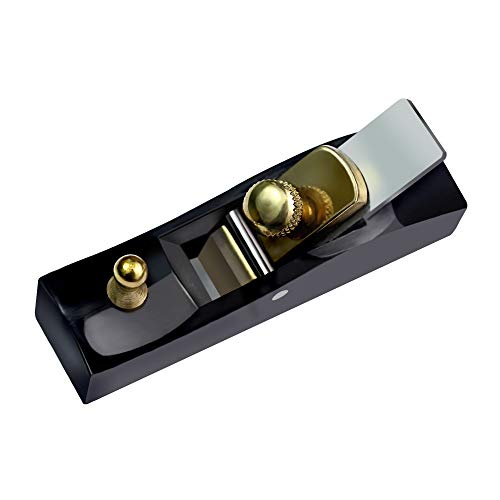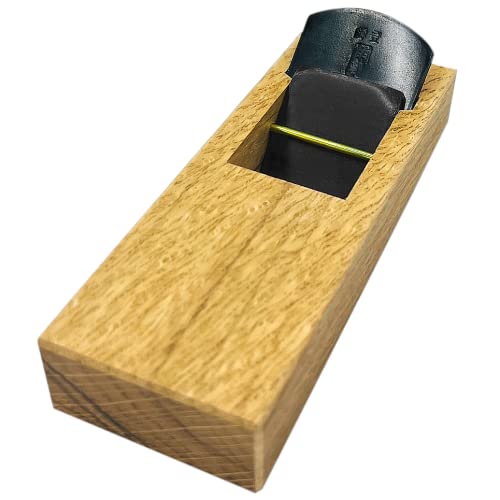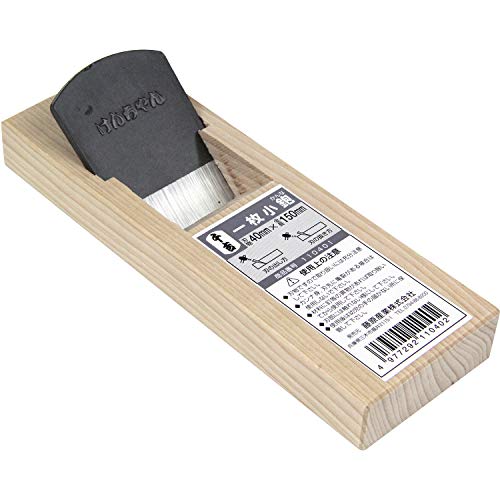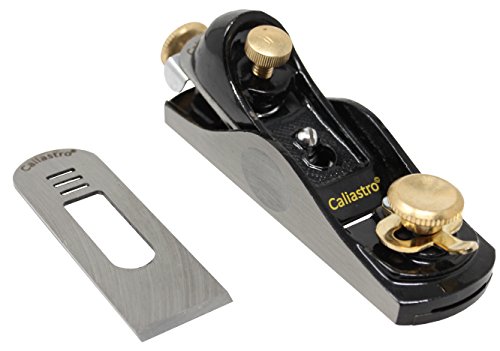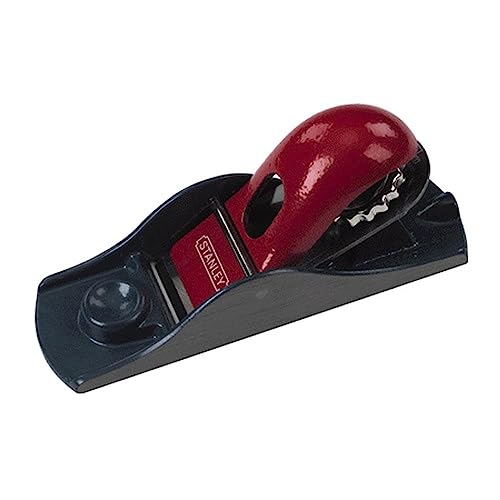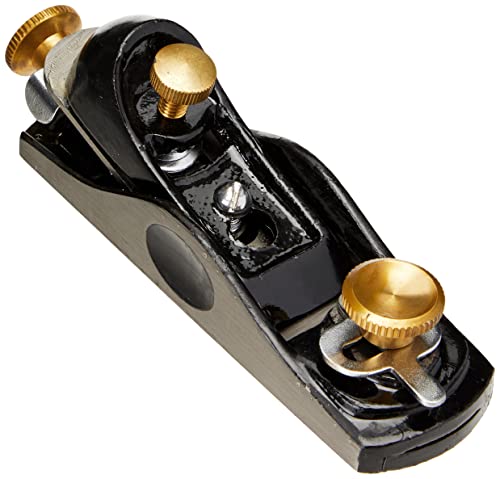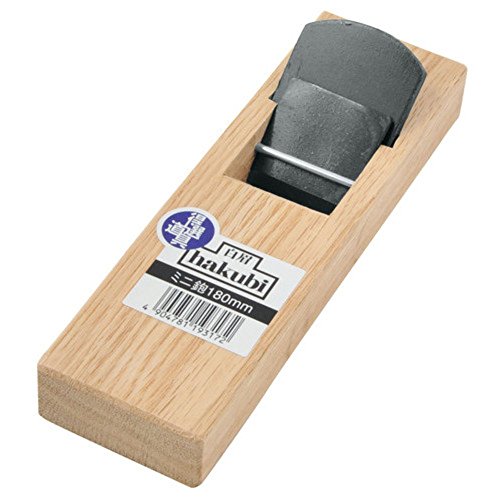The Best Low Angle Block Planes to Create Clean Slices
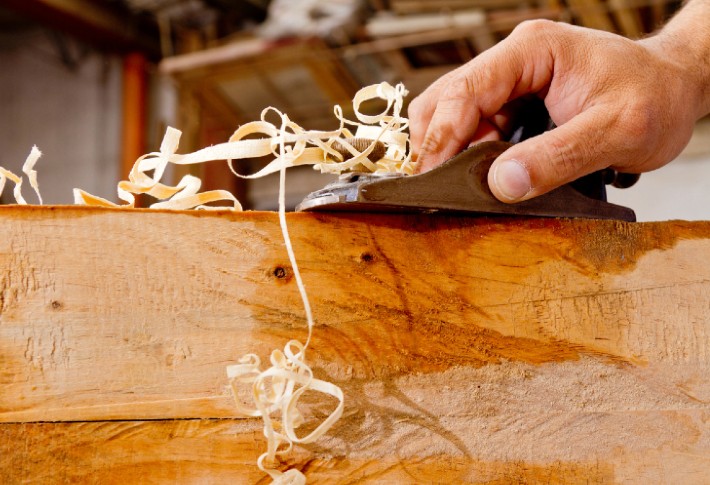
- Best Overall: Yogeon Low Angle Block Plane Shop Now ➔
- Runner Up: Kakuri Low Angle Block Plane Shop Now ➔
- Honorable Mention: Kanna Low Angle Block Plane Shop Now ➔
- Contender: Caliastro Low Angle Block Plane Shop Now ➔
- Also Consider: Stanley 12-247 Low Angle Block Plane Shop Now ➔
- Also Consider: Mityvac Silverline Low Angle Block Plane Shop Now ➔
- Also Consider: Hakubi Low Angle Block Plane Shop Now ➔
Premium Low Angle Block Plane In Detail
Best Overall
When style meets utility, what you get is a Yogeon block plane. The plane is stylishly designed and does a great job on small woodwork projects.
Key Features
- It weighs 77 grams.
The body is made of wooden material.
Small size.
Has a small handle for gripping.
Runner Up
Kakuri block plane is a plane that does its job efficiently and stands the test of time. It lasts longer than the other block planes.
Key Features
- The body is made from oak wood.
The blade is made from high carbon steel.
It planes by pulling rather than pushing.
It weighs 266 grams.
Honorable Mention
The Kanna block plane is an affordable block plane that ticks all the boxes. It performs effectively on small woodwork finishing.
Key Features
- The body is made of wood.
It weighs 140 grams.
The blade is made of steel.
Contender
Caliastro is an adaptable block plane. It is useful for applying finishing touches with greater precision.
Key Features
- It weighs 839 grams
- The mouth is adjustable
- The body and blades are made of steel
- It measures 6.1 inches in length.
Also Consider
Stanley 12-247 is a flexible and easy-to-use block plane. It is perfect for doing cross-graining work.
Key Features
- It weighs 726 grams.
- It measures 7.1 inches in length.
- The body and blade are made of steel.
- It has an adjustable mouth.
Also Consider
Silverline block plane brings ease to smoothening out end grains and applying overall finishing touches. It is a handy tool for every professional furniture maker.
Key Features
- The body and blade are made of steel.
- It has an adjustable mouth.
- It weighs 739 grams.
- The adjustable screws are made of brass which means they are anti-rust.
Also Consider
Hakubi block plane features the typical simple Japanese plane design. It works well on a wide variety of wood types, including hardwoods and pines.
Key Features
- The body is made of wood.
- The blade is made of steel.
- The plane is 7 inches wide.
- It weighs 99 grams.
Best Block Planes Buying Guide
Tools are made to make life easier; the same can be said of block planes. These mini planes may not be able to match other types of planes in size and output. However, none of the big planes offers the unique use that block planes offer. Therefore, the place a low angle plane occupies in a cabinet maker’s toolbox is reserved and unassailable. Having read through our review of the planes, you may still have niggling doubts about the best low angle block plane for you. This buying guide provides detailed information on block planes. It discusses the various things to look out for and the factors to prioritize when making a choice of the best low angle block plane to buy. Though these hand tools may be a bit more tedious to use than power tools, they make a world of a difference in terms of precision and quality.
What Makes Block Planes Different?
The fact that there are many types of hand planes is undoubted. You may wonder what makes the low angle block plane different. Below are some distinguishing characteristics of woodworking planes.
One-handed use
The most visible difference between low angle block planes and other hand plane types is their compact size. The compact size makes it easy to use them with only one hand instead of the two-handed operation of other bigger types of planes.
Lower blade angle
Unlike other types of planes, the blade of a block plane is usually placed at a low angle compared to the regular plane. This low positioning makes it possible to use woodworking planes to cut end grain.
Flat sole
Another characteristic of the low angle block plane is the flatness of its sole. This is in contrast to the partially curved sole found in other planes. Note that a flat sole is not an exclusive characteristic of block planes. There are a few other planes that have flat soles.
What Are the Types of Block Planes?
It is a given that block planes typically have lower blade angles and the blade is fixed bevel up. Block planes are then distinguished based on the bed angle. Therefore, block planes are basically of two types. The standard angle block plane and the low angle plane.
Standard angle block plane
In this type of block plane, the bedding angle is 200; this makes it possible to have a 450 cutting angle with a blade angle of 250. Standard angle hand planes are ideal for working on long-grain woods.
Low angle block plane
With this type of block plane, the bedding angle is lower than the standard angle at 120. Thus, you have a cutting angle of 370 when coupled with a standard blade angle of 250. This low angle is suitable for slicing end grain.
Also, the miniaturized version of the standard angle block plane is often touted as the third type of block plane. However, it is better considered as a variant of the standard angle block plane and not a distinct type on its own.
For a more in-depth look at the various woodworking planes, watch this video from Jonathan Katz-Moses:

What Are the Things To Consider Before Buying Block Planes?
There are different models of planes available to buyers. Making a sound buying decision may be an arduous task with the options available. The following factors are considered most important when choosing a low angle block plane:
Brand
The first factor to consider is the brand that made the low angle block plane. Over the years, certain brands have built an excellent reputation for their hand planes and have become household names in the industry.
Adjustability
A low angle block plane with an adjustable mouth gives the user the freedom to play around with the tool’s configuration to get your desired trim or cut. An unadjustable mouth means you are stuck with the default configuration. This effectively eliminates flexibility.
Type of material
When it comes to the type of material, our aim is to acquire a low angle block plane that boasts a high level of durability. The type of material used to make the plane’s body, the blades, the chip breaker, and the nuts are of importance. For example, a blade made of high-carbon steel is stronger and potentially more durable than a blade made of ordinary steel. The anti-rust property of the plane’s nut should also be considered.
Ease of assembly
Assembling a low angle block plane would normally not be a problem for a master carpenter or furniture maker. However, there are certain types of block planes that can be assembled faster than the average block plane. This may prove useful when time is of the essence.
What To Do After Getting a Block Plane
A newly acquired low angle block plane often comes with a relatively sharp blade. However, you may want to assess the sharpness before putting it to full use. It is not advisable that you test the sharpness of the cutting edge with your fingers to avoid injuries. You should get a piece of paper to assess the sharpness. A sharp edge will make a clean cut through the paper, while a blunt blade will crumple the paper. Once the sharpness is confirmed, you can then proceed to put it to full use.
How Much Do Block Planes Cost?
The price of hand planes ranges from $11 to as high as $300. The type of materials used to make the low angle plane affects the price. The size also influences the price. A balance can be struck between cost and efficiency with planes within the $30 and $150 price range.
People Also Asked
What is the difference between a bench plane and a low angle block plane?
The bevel faces up in a low angle block plane; the bevel is down facing in block planes. You can use the low angle block plane with one hand; you use the bench plane with two hands. Block planes are generally smaller in size than bench planes.
Can you use a low angle block plane on plywood?
It depends on the task you wish to accomplish with it. It may work fine over a short length of plywood. But for a longer length of plywood, you should consider using sandpaper to avoid damaging the plywood.
Are Japanese planes good?
Japanese planes are good planes that do a fine job on woodwork. The body is strictly made from wood. The entire set-up can be easily taken apart and assembled.
Article Contributors
The Woodsmith Review Team’s product reviews and in-depth guides are here to help you choose the best tools and gear to build great-looking projects confidently. Woodsmith is reader-supported: When you buy through links on our site, we may earn an affiliate commission. Large language models (like Artificial Intelligence) may have been used in the research and creation of the content.
Inquiries regarding specific articles or product testing should be sent to aimperiapt@gmail.com

